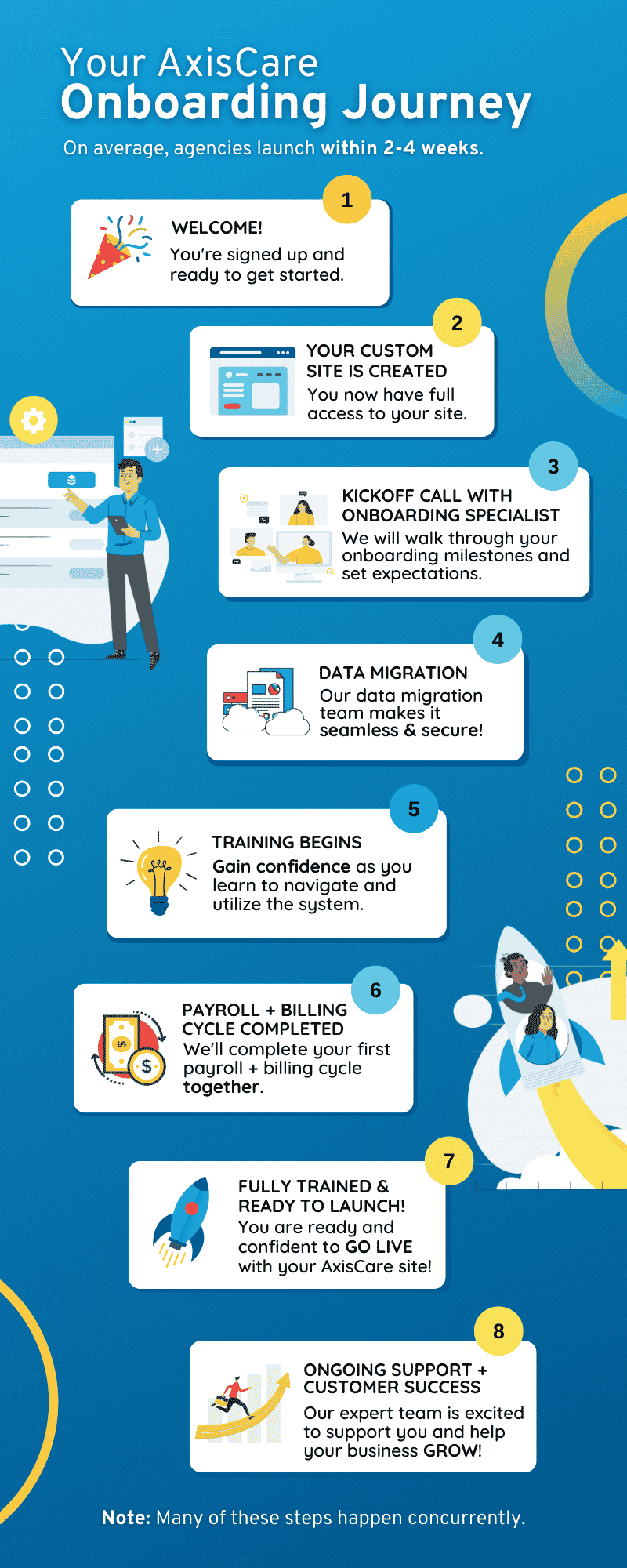The labor market is tight as a drum. The American population is aging. The job is taxing, but the pay isn’t always competitive. According to the most recent statistics released by Home Care Pulse, the average in-home care provider is spending nearly $175,000 per year to cover the cost of staff turnover. Meanwhile, new hires typically only last for about 12 weeks (if that).
For all these reasons and more, recruiting and retaining caregivers is one of the most important challenges facing agencies today. Whether you’re currently short-staffed or trying to avoid sliding into shortage territory, this piece will help you better understand the reasons behind this scarcity and how you can stay afloat.
Understanding the Caregiver Shortage
Like most socio-economic challenges, the caregiver shortage can’t be boiled down to a single issue; there is a mosaic of factors that are converging to create friction in the home care industry.
High Demand for In-Home Care
According to the World Health Organization, 1 in 6 people in the world will be aged 60 years or older by 2030. That means more and more seniors will be requiring at-home care within the next decade, which will in turn boost demand for caregivers. If the current supply of qualified caregivers hasn’t kept pace with demand, this challenge will only be exacerbated as the population continues to age.
Undervalued and Underpaid Profession
While money represents just one piece of the job satisfaction puzzle, not earning a liveable wage can quickly erode motivation and morale. Many in-home caregivers earn relatively meager wages that fail to reflect the essential and often challenging nature of their work. As a result, potential caregivers may be hesitant to enter the profession, and existing caregivers may seek higher-paying opportunities in other fields.
Lack of Available Education
Providing in-home care requires a diverse set of skills, from medical knowledge to interpersonal communication. However, in many cases, caregiving education programs are either not widely available or too expensive, which makes it difficult to acquire the necessary qualifications. What’s more, a lack of clear career pathways and professional development opportunities may discourage people from entering this field.
Immigration Laws
Immigration laws also play a role in exacerbating the in-home caregiver shortage, especially in countries where foreign-born workers often fill these roles. Strict immigration policies (and policies that favor workers with certain professional training), visa restrictions, and long processing times can slow the inflow of qualified caregivers to a trickle.
Effects of the Caregiver Shortage
The current caregiver shortage is creating – and will continue to create – profound implications for individuals in need of care, their families, and the healthcare system as a whole.
Increased Care Costs
It’s a simple economic equation: when supply can’t meet demand, the cost for that good or service goes up. On top of that, faced with a limited pool of available caregivers, agencies are compelled to offer higher wages and better benefits to attract and retain qualified personnel. These increased labor costs are then passed on to clients as well.
Decreased Quality of Care
Nobody wins when caregivers are rushing between appointments with overloaded plates. Higher caregiver-to-patient ratios lead to increased workloads for available staff, less personalized attention, longer response times, and limited availability for crucial support.
Addressing Caregiver Shortage
It goes without saying that agencies are up against a lot right now! With no sign of these shortages slowing down, here are a few strategies to help you ride the wave and reinforce your organization against this industry trend.
Prioritize Your Caregivers Needs
Now is the time to evaluate benefits, incentives, and hourly rates to ensure your caregivers are of equal value in your business model. Your existing caregivers are less likely to flee if they feel appreciated and are being rewarded for their hard work. You’ll also be more attractive when recruiting new hires.
An increase in wages may be a hard sell in terms of your operating budget, but according to The American Prospect, “Raising wages for direct-care workers to $15 an hour or more has been found to pay for itself by reducing turnover, which results in better care.”
Invest In Technology and Remote Monitoring
Technology in home care is driving some of the country’s most encouraging home care statistics. Agencies short on caregivers scrambling to meet clients’ needs can use technological tools like smart sensors, vital sign monitors, life alerts, and other digital tools to meet 24/7 patient needs without round-the-clock in-person monitoring.
Other sources of technology, like home care software, allow caregivers to easily check/change schedules, access payment, document patient visits (EVV), visualize medication reminders, and more. This facilitates much of the caregiving process and eases burdensome workloads.
Advocate for Policy Changes
Issues in the home care sector have reached legislative importance, and in 2023, two significant bills were passed to improve conditions in the industry. The Better Care Better Jobs Act aims to improve quality of care by investing in the home care workforce, providing essential training and ensuring fair wages for caregivers. The Elizabeth Dole Home Care Act, on the other hand, focuses on expanding access to affordable and comprehensive home and community-based services. This legislation emphasizes the need to empower individuals to age in place and receive care within the comfort of their homes.
In-home care agencies can actively advocate for these policy changes by engaging in grassroots efforts at both the federal and state levels. They can collaborate with industry associations like the HCAOA, participate in advocacy campaigns, and communicate with policymakers to express the importance of these bills.
Ways to Retain Caregivers
Caregiver retention is hovering at a historic low and is unfortunately projected to continue decreasing, resulting in home care agencies needing to adjust their tactics to increase business and stay afloat. The strategies agencies implement today can help retain caregivers and build resilience to external fluctuation.
Improve Work Environment
Even if your in-home caregivers work remotely, there are plenty of ways to foster a positive and nurturing work environment. Implementing regular virtual check-ins and team meetings can maintain a sense of connection and provide a platform for caregivers to share experiences and seek advice. Finally, providing mental health resources and regular feedback channels can go a long way towards supporting employees’ overall well-being.
Offer Incentives and Benefits
Fair wages, comprehensive benefits, and performance-related bonuses not only affirm their worth but also promote a stable and motivated team dedicated to providing quality care.
Provide Training and Specialization
Investing in training and career advancement opportunities for your staff not only enriches their skill set but also ques to them that you are interested in their personal growth and achievements.
Provide High-Quality Care with AxisCare
A well-functioning and thriving team starts with the right technology. AxisCare makes your employees’ lives that much easier by automating time-consuming admin tasks, improving tracking and management workflows, and much more. Request your free demo!









